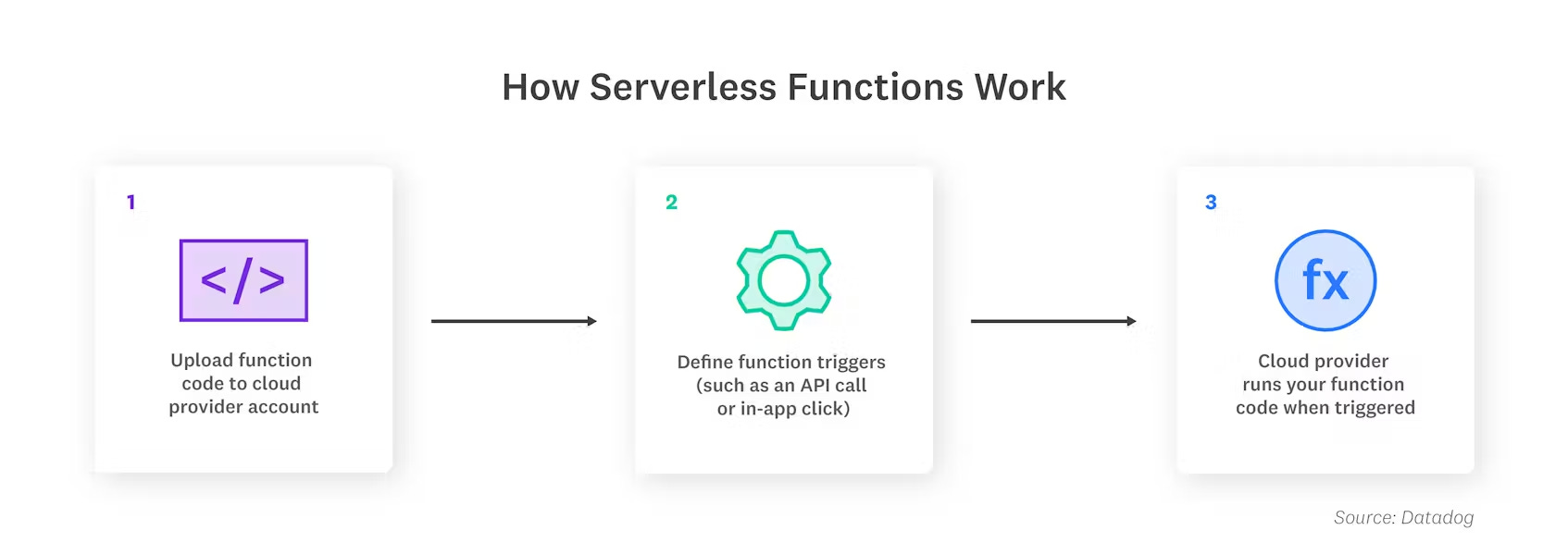☁️ Serverless Architecture
Serverless architecture is an approach that allows developers to build and run services without having to manage the underlying infrastructure. Developers just write their code and deploy, while a cloud provider provisions servers to run their applications, databases, and storage systems at any scale.
⚙️ Working
- One of the most popular serverless architectures is Function as a Service (FaaS), where developers write their application code as a set of discrete functions. Each function performs a specific task when triggered by an event, such as an incoming email or an HTTP request. After testing, developers deploy their functions, along with their triggers, to a cloud provider account. When a function is invoked, the cloud provider either executes the function on a running server or, if there is no server currently running, spins up a new server to execute the function. This execution process is abstracted away from developers, who focus on writing and deploying the application code.
- Another popular option is serverless containers.

🌟 Benefits
- Cost efficiency (Pay per use)
- Scalability (Auto scaling)
- Developer Productivity (Focus on code)
- Resilience and Availability
- Each function/container runs in isolation
- Built-in fault tolerance
⚠️ Challenges and Considerations
- Cold start latency
- The first invocation of a function after a long period of inactivity can experience higher latency.
- Can be mitigated by using techniques like function warmers or provisioned concurrency.
- Complexity in State Management
- Since serverless functions are stateless, managing state across multiple sessions can be challenging.
- Vendor Lock-In
- Heavily reliant on services provided by a vendor.
- Can be mitigated using an open-source serverless framework like Knative.
- Debugging and Monitoring
- Resource Limits
- Serverless functions generally have execution time limits (e.g., 15 minutes for AWS Lambda).
🛠️ Common Use Cases
- Web applications
- Data processing
- Event-Driven Automation: Serverless functions can automate routine tasks such as backups, monitoring, and notifications based on predefined events.
- DevOps and CI/CD
🚀 Examples
- Google Cloud Functions
- AWS Lambda
- Microsoft Azure Functions